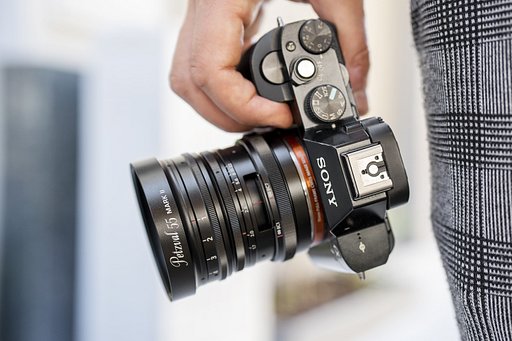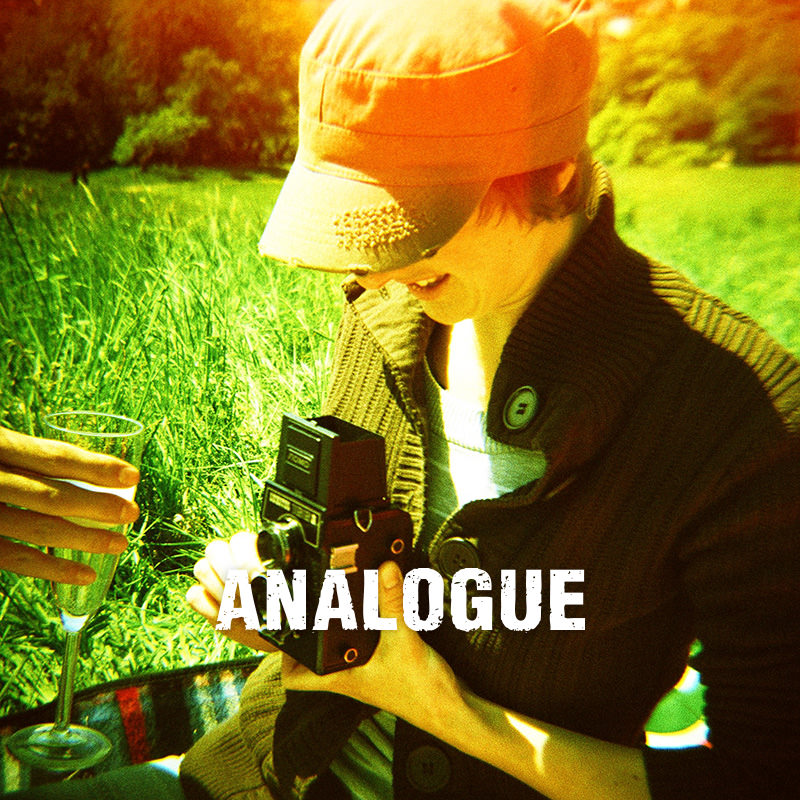Kali Spitzer Explores Queer and Indigenous Lives Through Analogue Photography
1 6The dazzling images of photographer Kali Spitzer are a testament to the contemporary experience of the BIPOC and queer communities she is a part of. Reclaiming the visual narrative of these groups is the major theme in the photographer’s work, as she tells the stories of those from the traditional unceded lands of the Tsleil-Waututh, Skxwú7mesh, and Musqueam peoples.
Today Kali speaks to us about how analogue photography has been an active tool that allows her to channel her art into a message which engages, and invites us to reflect on ourselves, the time we live in, and the space we occupy in the world.

Hi Kali, welcome to the Lomography Magazine. In your work the message and the medium of choice support one another. How much does the analogue experience shape and guide your work?
I choose to work with analogue photography because of the process. 35 mm, 120, and large format wet plate collodion offer a richness to both the final image and method that you can’t achieve with digital photography. This process supports me as a creator to slow down and engage more intimately with both the medium and the person I am photographing. There is a connection to the medium through the handling and creation of the film (as seen in the wet plate collodion process). When working in analogue each image must be deeply considered. I have to trust myself as you can’t see the final image until the film is developed.
One of the main pieces of my process as a photographer is to make sure people are being represented in the way they want to be, to be seen and witnessed for who they are. Analogue photography allows me the time and space to connect and communicate with those I am photographing, to come together in collaboration to create the image. The pace is dramatically different than that of digital photography, and in my practice this is essential.
With the kind of photography you do, there is an aspect of waiting and observing the process for your subjects. Are the people you photograph involved or curious about analogue photography? And does that help during the portrait session to create a special bond?
The process of tintype photography is generally quite interesting for most people. The experience allows those I photograph to see their image come to life. I always bring people into the darkroom with me if they want, and most people do wish to witness this piece. In the darkroom, we watch the plate become negative and following this, the image disappears and reappears as a direct positive complete image.

This part is always exciting for me as the photographer, as well as for those I photograph. The most important part of creating with somebody is that moment in the darkroom, when people see the image come to life and they see a part reflected that empowers them. For example, sometimes people see their grandparent's faces reflected in their image, and this can be quite emotional. For me, the heart of photographing someone is this moment in the darkroom.
During our time in the darkroom, we get to connect about what we think works in the image, what we would like to change. This process is deeply rooted in communication. As we can see the image develop right before our eyes, this allows us to navigate and collaborate in real-time. While honoring and co-creating with those I photograph, I strive to build a bond and relationship that feels safe and intimate.
In your work An Exploration Of Resilience And Resistance, there is a contrast between modern elements in your pictures, symbols of our times, and an old technique used. Do you think the people involved bring out something extra that helps to break the common rhetoric of our time through this process?
This is largely why I choose to work in this medium. I hope to create contemporary images of my community, both BIPOC and queer folks, that represent who we are today. Photography historically has been a medium that has taken from Indigenous and queer communities: images taken without our consent, organized by photographers who are not part of or in relationship to our communities. For this reason, I am committed to creating photographs of queer and Indigenous people from a queer and Indigenous perspective.

I am juxtaposing this century-old process with contemporary depictions of being. Each individual I photograph brings something new and different to this experience and to the image itself. Some people bring specific items, clothing or creations that may speak to who they are. Whether those are cultural objects, artistic pieces or special articles of clothing that embody their relationship to self. Others simply bring themselves, in all their vulnerability and power.
Sometimes with a portrait session, stories are shared with me about who someone is, their struggles, their strengths, and their connections to community and culture. Everyone is invited to share any of their stories with viewers through image captions, though some of this information is simply shared with me to create a more authentic photograph.
I am so honoured by all that people share about their histories, and I hope to honour those histories within the photographs we create together. In this way, everyone brings something different, and something special to each photograph. I would not be able to make the work I do without the generosity and openness of those who chose to work with me.

The female experience is at the forefront in your work. It is especially significant in your project Our Bodies. What role do you wish to see developing for the female experience in the future?
This is a big question, I would first like to start by acknowledging that my work is centred around the human experience, particularly the experience of BIPOC and queer folks. It is not about the female body, but all bodies. My work highlights queer kin, including trans and non-binary folks. All women fit into the work I create but my work is not explicitly centered around women. I hope to honour the experience of women just as I hope to honour the experience of my queer and trans relatives. I believe it is important to be inclusive of all genders and the broad spectrum of our experiences.
All women, two-spirit, trans and non-binary people already hold space and have big roles within community. For me the shift I wish to see is within society itself. It is not about our roles in this world but how they are honoured. I hope that one day we will be protected and upheld. There needs to be a shift in the treatment of BIPOC and queer people both locally and globally. This shift is imperative now more than ever, as we witness the current genocides taking place in the Congo, Sudan and Palestine, as well as the unjust treatment of BIPOC globally.

In your project The North, you had a more documentary style rather than fine art. Which photographic language best suits your vision for future projects?
I do not see a separation between documentary and art. Each image I create is an archive of either a person, a place, an item, or a practice. The North focuses on 35 mm film and was created while spending time on the land of my ancestors. These images record cultural practices and honour community members. An Exploration of Resilience and Resistance, while it may appear as fine art (I believe this is simply because of the medium itself), it is, in reality, created with the same purpose and intention as the images created within The North.
I am working to create an archive for people and their families. To record who we are at this time in history. And to allow broader communities to see BIPOC and queer folks in the ways we wish to be represented. All images I create are about self-determination. When photographing another person, cultural object, or landscape, I ask my collaborator or myself, "How do you want to be photographed?", "What best represents you?" and "How do you want the world to witness you?" Having somebody feel safe, honored, and seen accurately is how I approach every photograph and every photograph is ultimately documentation, an archive, and art. I don’t value one over the other, to me they are inseparable. Both are a labour of love and time spent.
Thank you to kali for sharing her work with us! You can keep up with her latest photography on her website and Instagram.
written by eparrino on 2024-06-03 #news #portraits #queer #collodion-process #bipoc #indigenous-community #tint-type
















One Comment